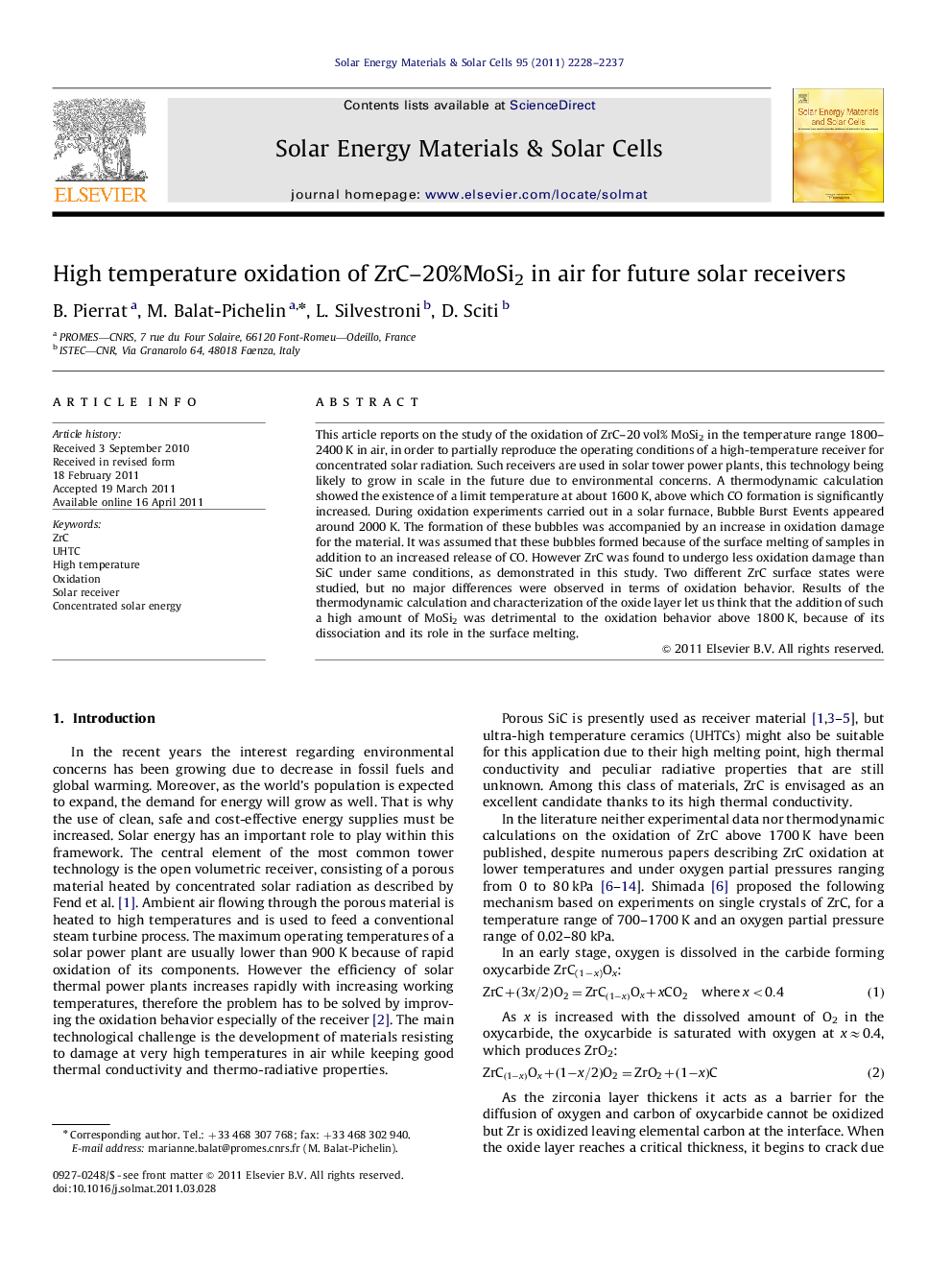| کد مقاله | کد نشریه | سال انتشار | مقاله انگلیسی | نسخه تمام متن |
|---|---|---|---|---|
| 78771 | 49342 | 2011 | 10 صفحه PDF | دانلود رایگان |

This article reports on the study of the oxidation of ZrC–20 vol% MoSi2 in the temperature range 1800–2400 K in air, in order to partially reproduce the operating conditions of a high-temperature receiver for concentrated solar radiation. Such receivers are used in solar tower power plants, this technology being likely to grow in scale in the future due to environmental concerns. A thermodynamic calculation showed the existence of a limit temperature at about 1600 K, above which CO formation is significantly increased. During oxidation experiments carried out in a solar furnace, Bubble Burst Events appeared around 2000 K. The formation of these bubbles was accompanied by an increase in oxidation damage for the material. It was assumed that these bubbles formed because of the surface melting of samples in addition to an increased release of CO. However ZrC was found to undergo less oxidation damage than SiC under same conditions, as demonstrated in this study. Two different ZrC surface states were studied, but no major differences were observed in terms of oxidation behavior. Results of the thermodynamic calculation and characterization of the oxide layer let us think that the addition of such a high amount of MoSi2 was detrimental to the oxidation behavior above 1800 K, because of its dissociation and its role in the surface melting.
Samples heated by concentrated solar radiation in static air, in situ images: ZrC at 2000 K (A) and at 2270 K (B) compared to SiC at 2000 K.Figure optionsDownload as PowerPoint slideHighlights
► Oxidation of ZrC–20% MoSi2 is studied in temperature range 1800–2400 K in air.
► ZrC has better stability under air than SiC for designing solar receiver.
► From 2000 K in air, SiC bends due to oxidation stresses, loses weight and is extremely damaged.
Journal: Solar Energy Materials and Solar Cells - Volume 95, Issue 8, August 2011, Pages 2228–2237